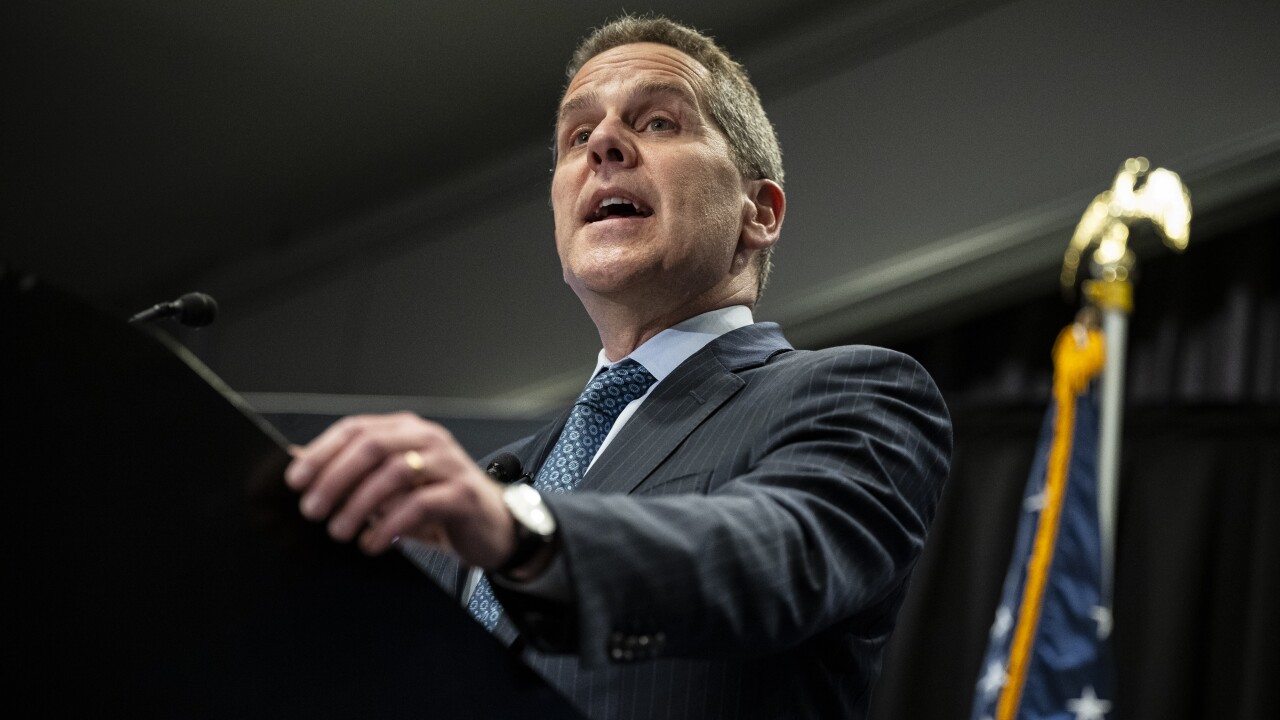WASHINGTON — The Treasury Department said it has denied funding for 59% of applicants to the Small Business Lending Fund and planned to distribute just $4.3 billion out of the $30 billion allocated to the program.
In a Tuesday white paper, the Treasury said it has issued preliminary approvals to all applicants who were deemed eligible and qualified for the fund. In total, it awarded funds to 41% of applicants, or 382 of the 932 banks that applied.
More than 40% were rejected because they failed to meet the minimum statutory or program requirements, including approval from their primary regulatory and the ability to pay dividends, Treasury said.
"Of the applicants that did meet these minimum requirements, Treasury has approved all institutions qualified for taxpayer investment and well positioned to extend credit to businesses in their communities," it said.
The Treasury has now distributed $1.8 billion in funding for 130 institutions, and plans to give out the remaining funds by Sept. 27.
"Because banks leverage their capital, the funding provided to communities by the SBLF …will help increase lending to small businesses in an amount that is multiples of the total amount provided through these programs," Don Graves, the deputy assistant secretary for small business, wrote in a Treasury blog post Friday.
The agency has faced criticism about the length of time it took to get the program off the ground and the apparent lack of interest from qualified small banks.
Treasury has long indicated that it did not expect to distribute anywhere near the $30 billion that Congress allocated for the lending program, which was created in 2010 as part of the Small Business Jobs Act. But officials have said the funding will have a meaningful impact on the banks and communities that receive it.
"Small business lending is one of our bank's strong points," said Richard Holmes, senior vice president and chief financial officer of $379.3 million-asset GBC International Bank of Los Angeles, which received $5 million from the program, in a testimonial provided to Treasury. "This SBLF investment will give us more room to work with those companies that are looking to export goods made right here in the United States."
For banks that were rejected, however, the decisions were a blow, said Kip Weissman, a partner with Luse, Gorman, Pomerenk & Schick.
"From the outside, it looks like SBLF got a great start initially, and then the processing slowed down and then they rushed at the end and, at the 11th hour, they informed 40% that they didn't make it," Weissman said. "There are cases I have that didn't make it and they are all going to have to cut back small business lending — it's a blow and it's surprising."
Weissman said some banks were frustrated that they didn't get a good explanation for why they were rejected, and won't be able to appeal the decision. Ultimately, Treasury is distributing just 14% of the funds originally granted to it by Congress.
Treasury drafted the white paper this week for banks that have questions about the approval process.
Banks were not eligible if they had more than $10 billion in assets; were currently or recently on the Federal Deposit Insurance Corp.'s problem bank list; were under dividend restrictions; or did not receive the recommendation of their prudential regulator.
Supervisors from the FDIC, Federal Reserve Board and Office of the Comptroller of the Currency were detailed to Treasury to serve on a committee to further review applications that may have been on the fence. Those include applicants that may have qualified for the program with a matching private investment; those that had a Camels rating of three, or a higher rating but adverse performance ratios; and those that received inconsistent input from their regulators.





